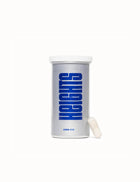
Cracking the code: The Bristol stool chart
The ultimate guide to decoding your poo.

In this blog post, let’s step into a slightly unusual, yet crucial, realm of understanding our health and nutrition: the Bristol stool chart. It might not be everyone's favourite topic, but it plays an essential role in understanding our gut health.
A quick scoop on the Bristol stool chart
So, what's this chart all about? Developed in 1997 by the University of Bristol, this chart classifies our stools into seven categories. Ranging from Type 1 (hard lumps like nuts) to Type 7 (entirely liquid), it helps us understand what's happening inside our gut. Take a look:

Each type tells us a different story about our health, especially our digestive system. For example, Type 1 and 2 often signify constipation, while Types 6 and 7 suggest the other extreme—diarrhoea. Types 3, 4, and 5? Those are your 'Goldilocks' stools—just right.
Listening to our gut
Understanding our stools using the Bristol stool chart provides fascinating insights into our health. It's like our body's not-so-subtle way of waving a red flag when things aren't quite right. For instance, frequently finding yourself at the extremes of the chart could mean you're not getting enough fibre, or perhaps you're stressed or dehydrated.
But let's be clear, this chart is not a diagnosis tool but rather an observation tool. It's a way for us to tune into our bodies and detect potential early warning signs. If you spot persistent irregularities, it's crucial to seek advice from a healthcare professional.
The role of nutrition in shaping your stool
The food we eat plays a significant role in determining our stool type. Dietary fibre, in particular, is paramount in maintaining healthy bowel movements. Soluble fibre found in oats, nuts, seeds, and some fruits and vegetables can help soften the stool, making it easier to pass. Insoluble fibre, found in whole grains and many vegetables, adds bulk to the stool and helps it move more quickly through the intestines.
On the other hand, a diet high in processed foods and low in fibre can lead to hard, difficult-to-pass stools, often represented by Types 1 and 2 on the chart. Similarly, excessive intake of caffeine or alcohol can lead to dehydration, potentially resulting in constipation or even diarrhoea.
It's not just about diet, though. Physical activity, hydration levels, and even stress can significantly impact your digestion and, consequently, your stool type. Regular exercise helps stimulate the natural contraction of intestinal muscles, aiding your digestive health. Adequate hydration keeps your stool soft and easy to pass. Meanwhile, high stress levels can disrupt your gut function, leading to constipation or diarrhoea.
So what? Making sense of our stools
Now that we're armed with this knowledge, what's the next step? Start 'reading' your stools. It can give an insight into your digestive health. Monitoring your stools can be a part of understanding how your diet, lifestyle, and overall nutrition affect your gut health. If you're not regularly in the 'Goldilocks' zone, it might be time to review your diet, check your hydration levels, consider your physical activity, and even evaluate your stress management.
Simple ways to improve bowel health
If you’re already at a perfect 4, then well done. Chances are your gut health is in a solid place. That’s not to say it couldn’t improve, but it’s not pressing issue. But if you’re not quite there (or if you are, and just want to stay in the ‘Goldilocks’ zone), try these three simple tips.
1. Stay hydrated
Your body removes moisture from stool in the large colon. The more dehydrated you are, the more it draws, hardening the stool and making it more difficult to pass. And conversely, drinking the right amount of water helps regulate your bowel movement and keep everything moving consistently.
2. Eat more fibre
Fibre is indigestible carbohydrates that form bulk in the stool. It’s essential for maintaining consistent bowel movement, but it often gets processed out of the food we eat—things like white bread or pasta have been stripped of most of their fibre. To counteract this, eat plenty of vegetables, and go for wholegrain options where they’re available.
3. More exercise—little and often
Exercise is great for you in many ways, and you can add digestion to the list. The more we move (in moderation), the quicker the stool passes through your digestive tract, giving your colon less time to absorb water. Aerobic exercise also helps improve the muscle function in your gut, keeping everything regular.
Remember, there's no one-size-fits-all when it comes to nutrition and health. But by listening to our bodies, including the often-ignored messages from our stools, we can make better-informed decisions and stride towards our own personal optimal health.
Know your own mind?
The average brain health score is 51/100. Take our 3-minute quiz to learn how yours measures up and how to boost it.




















